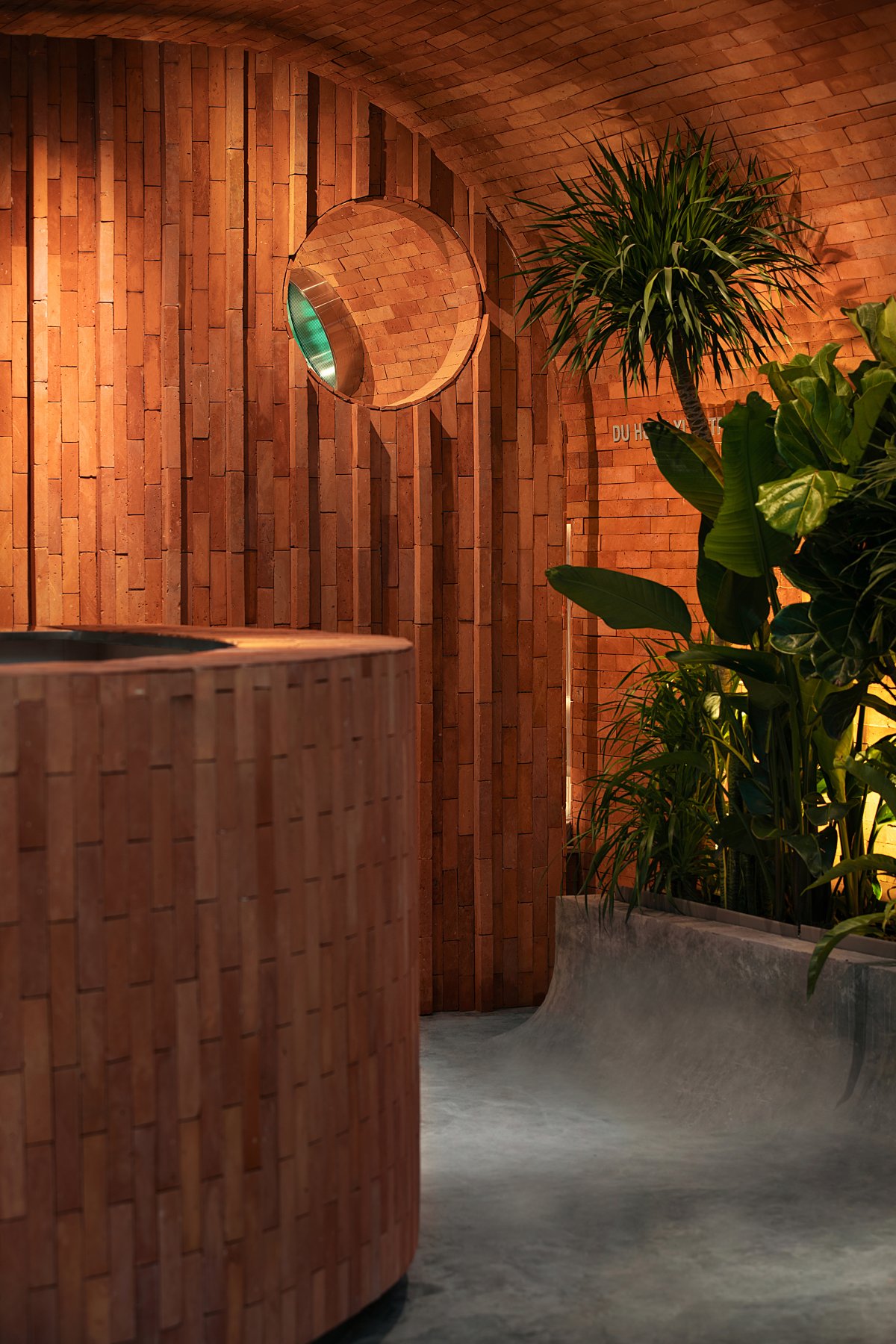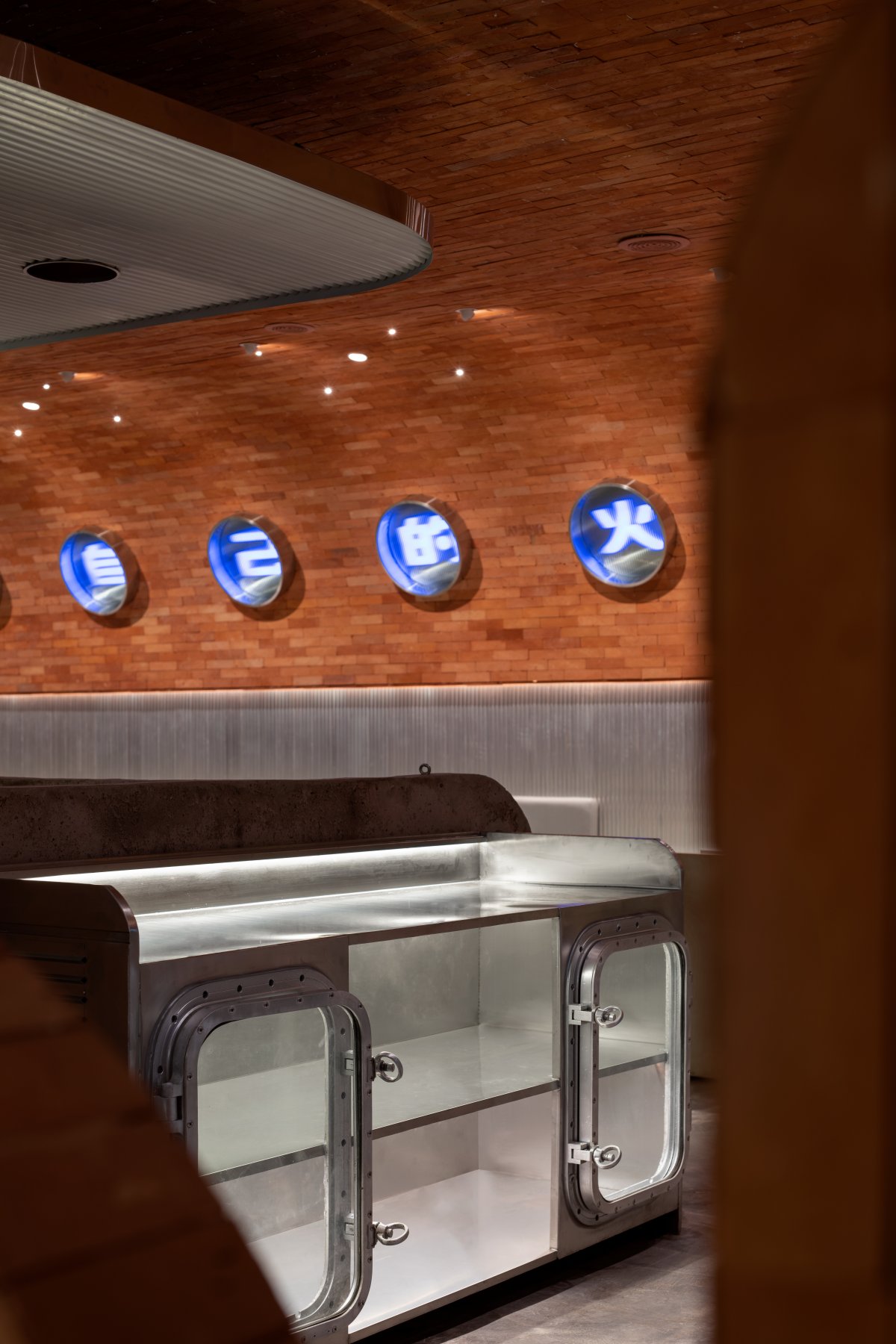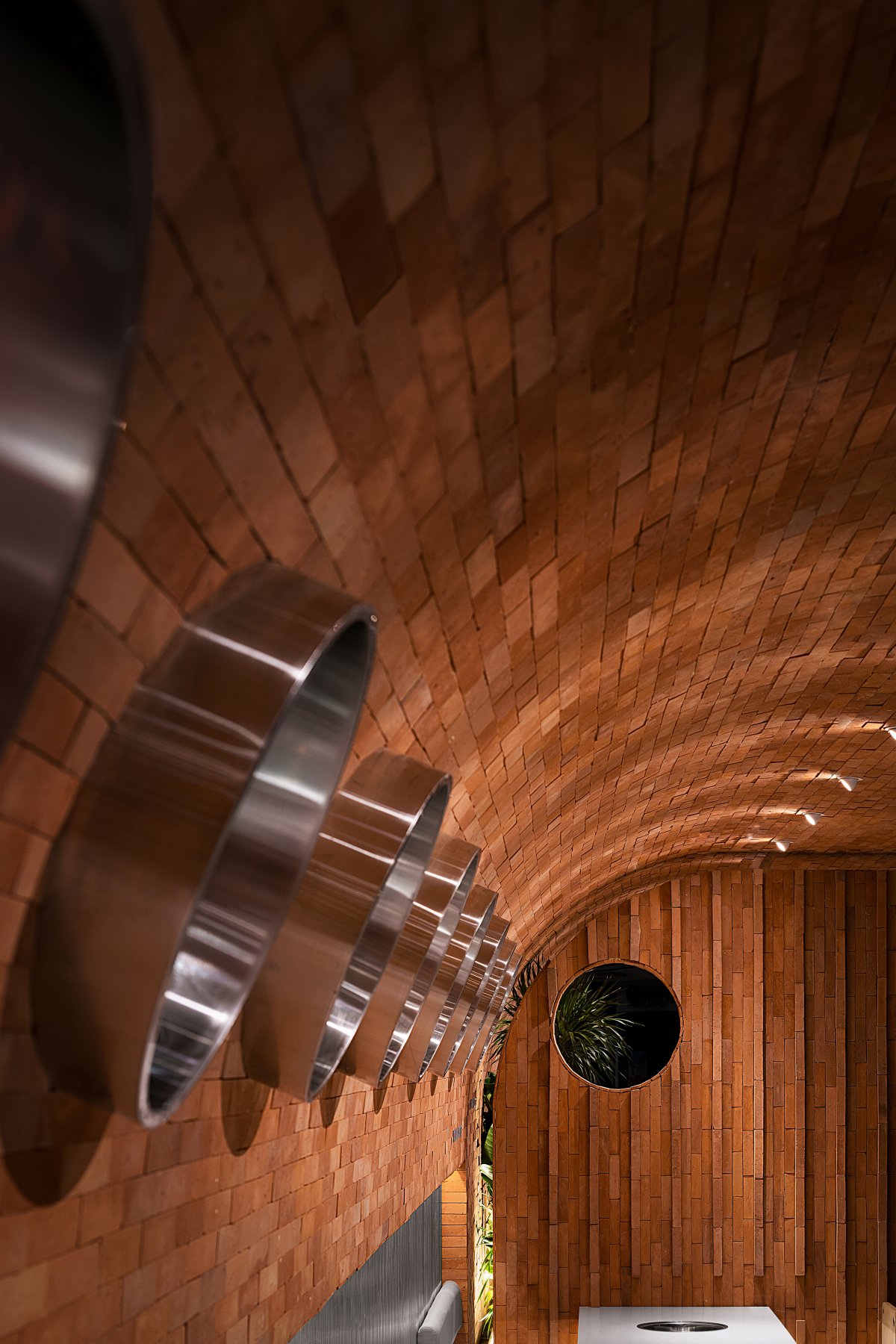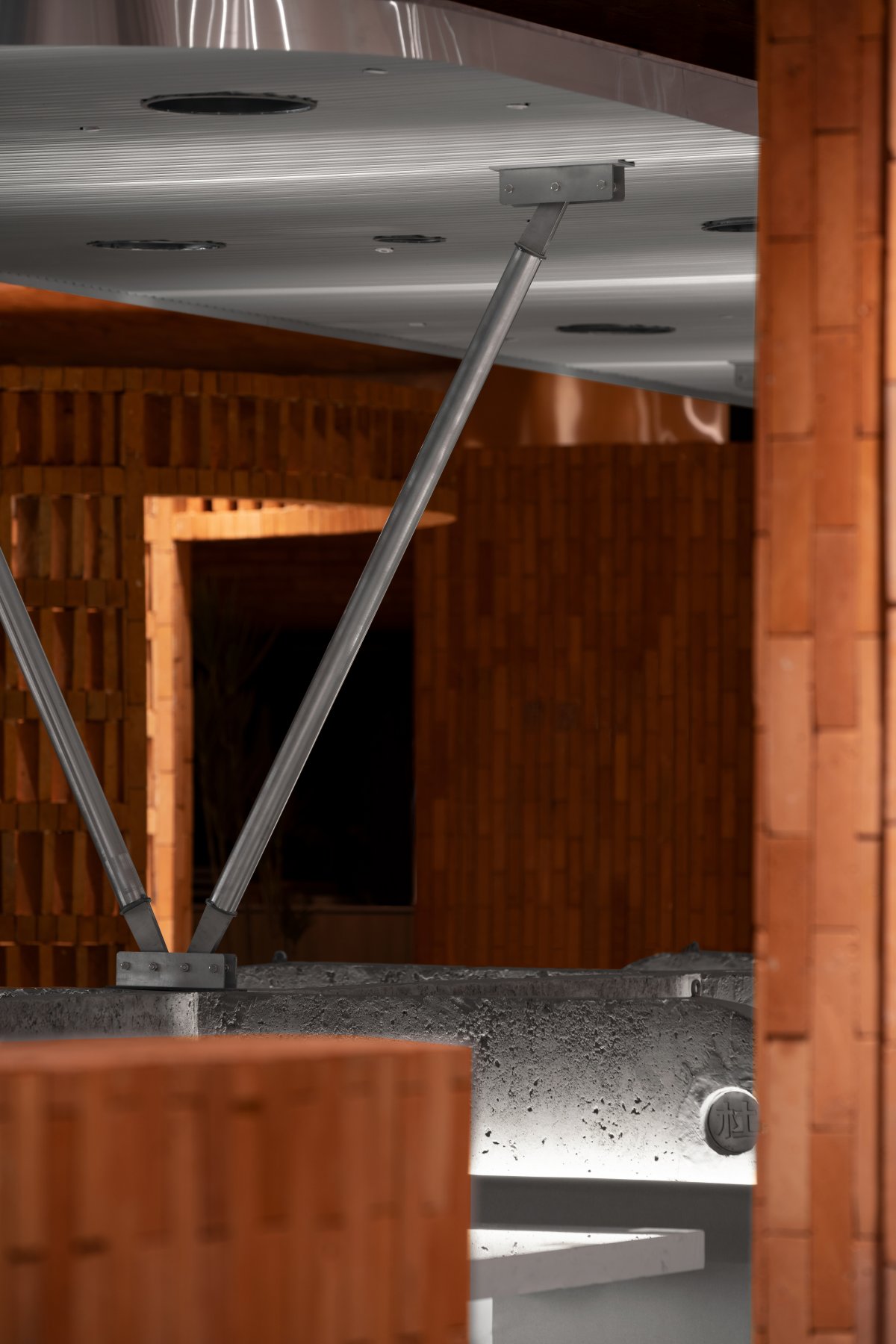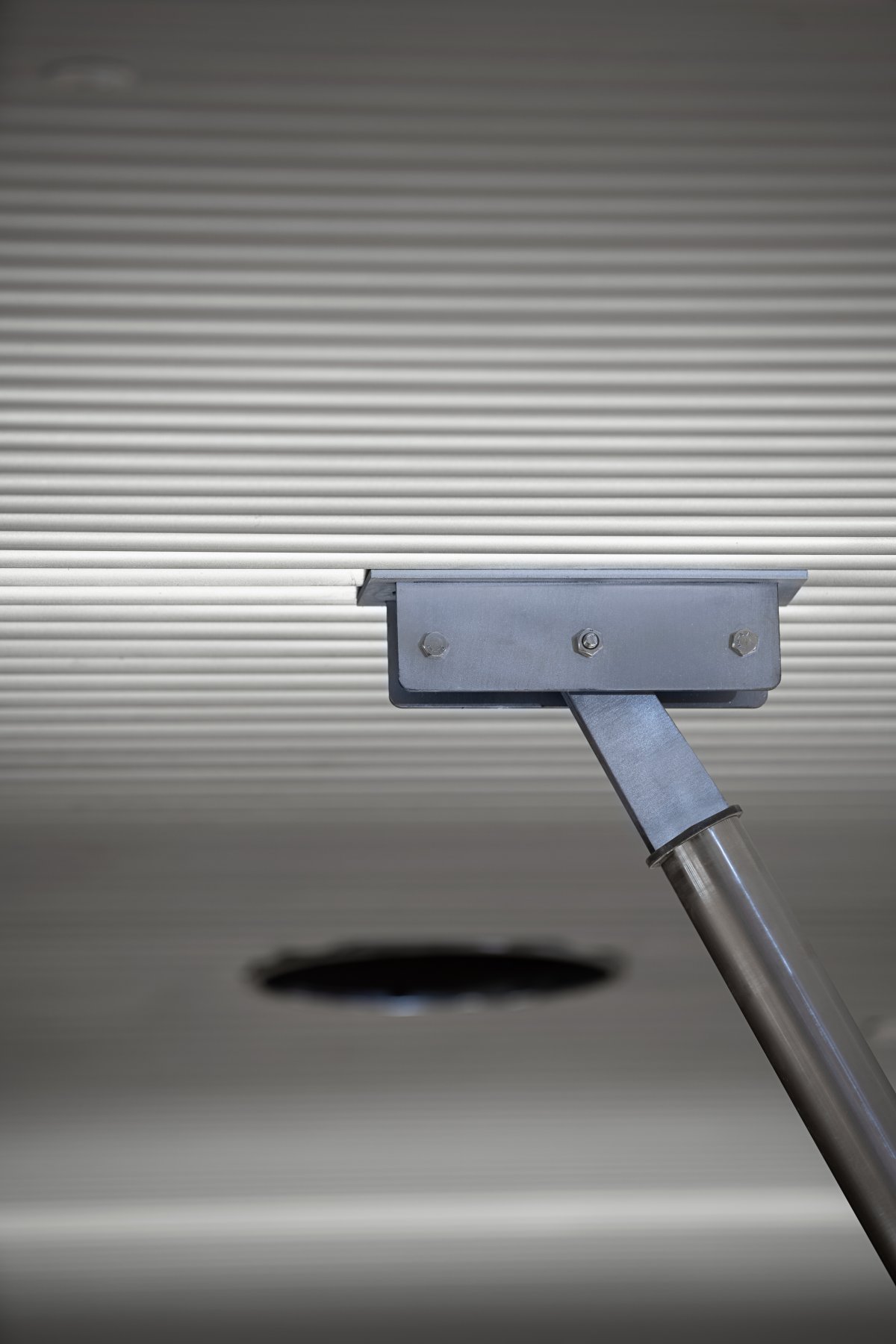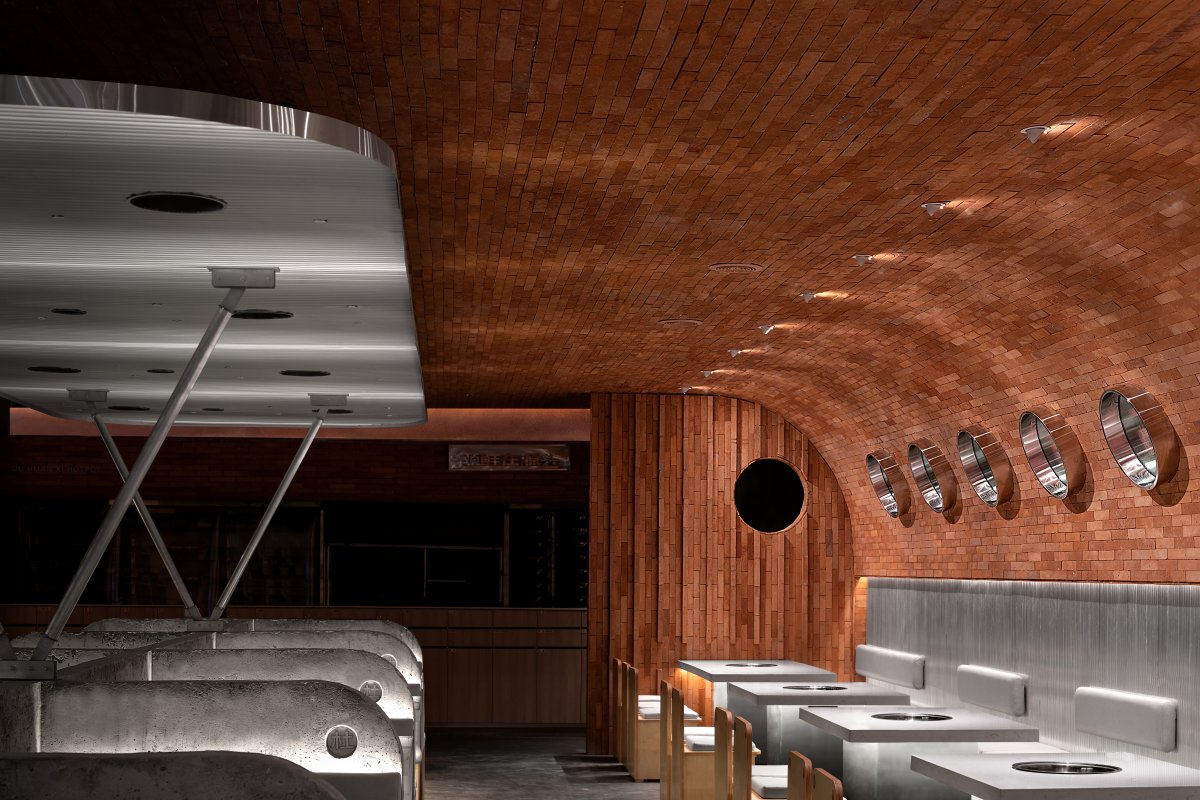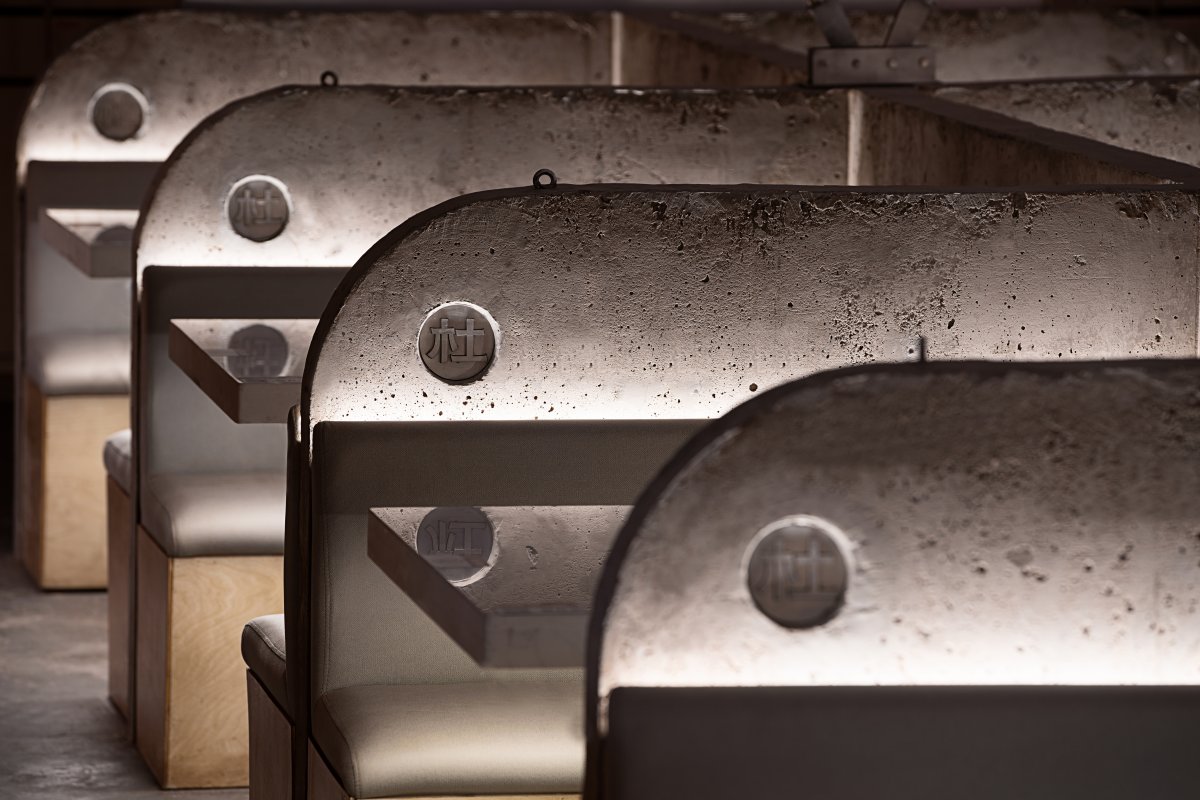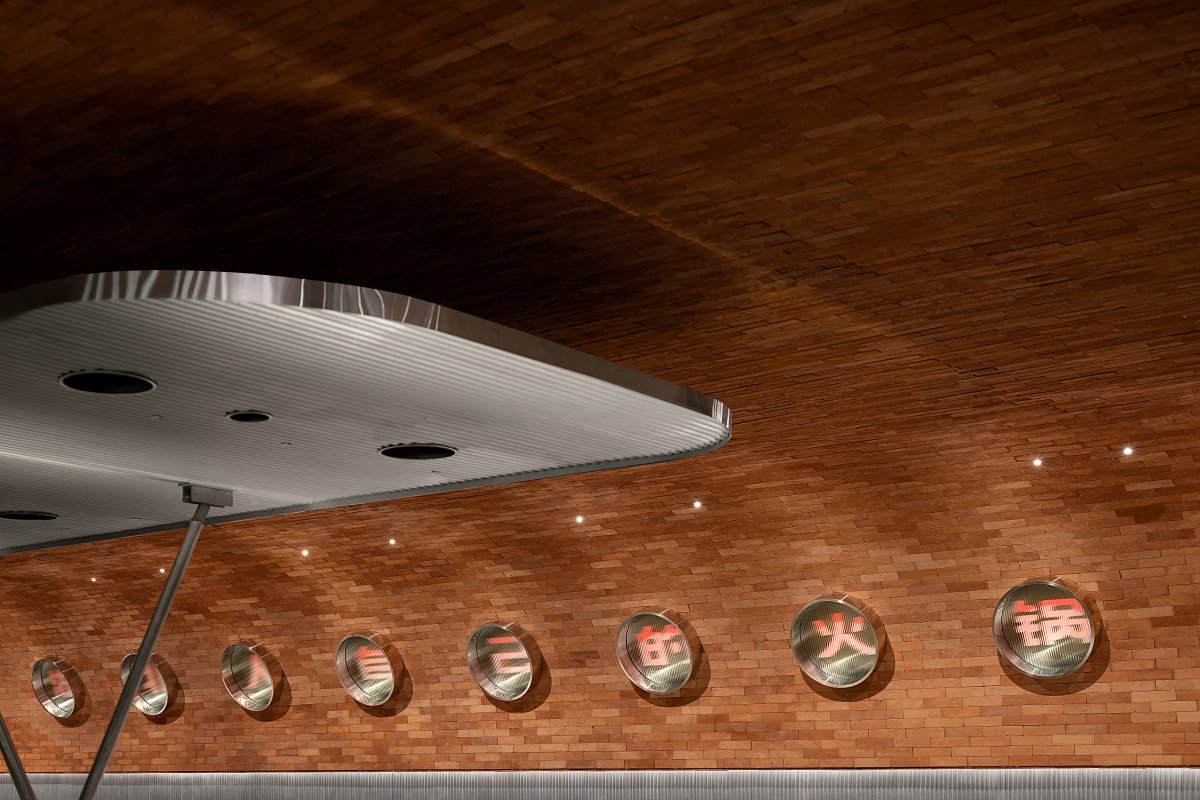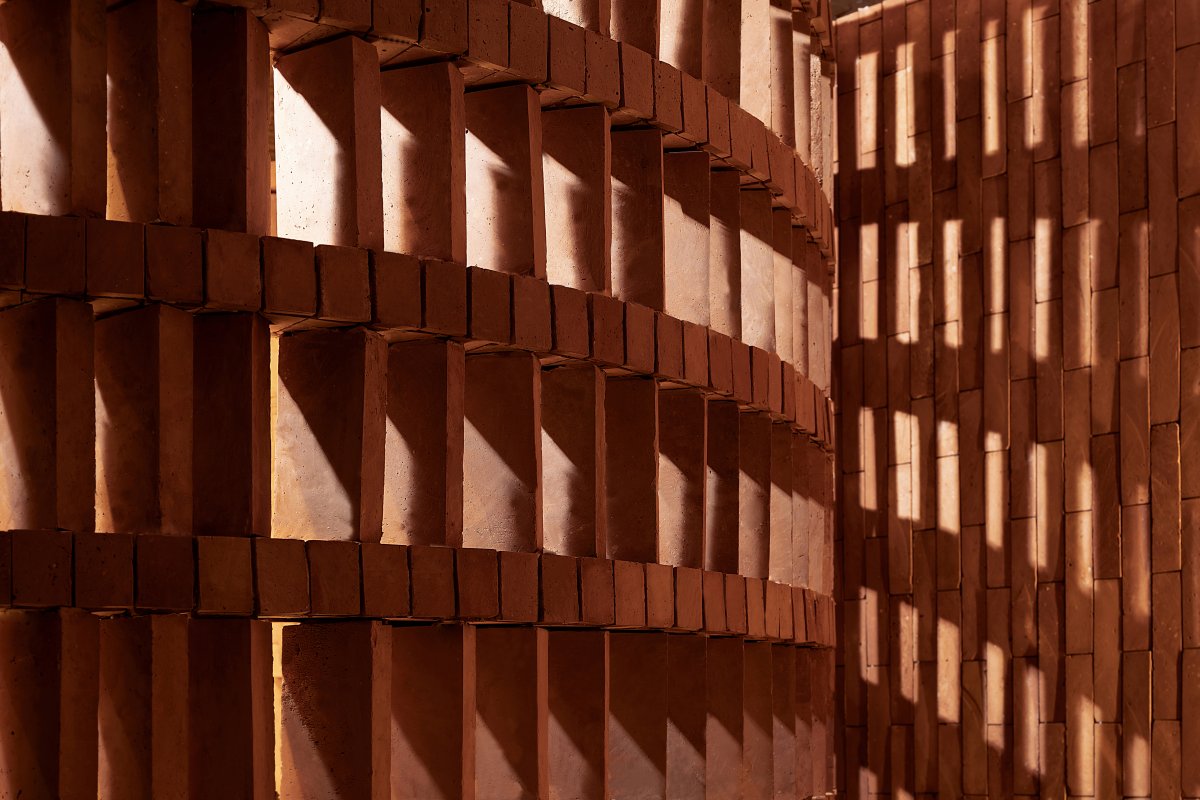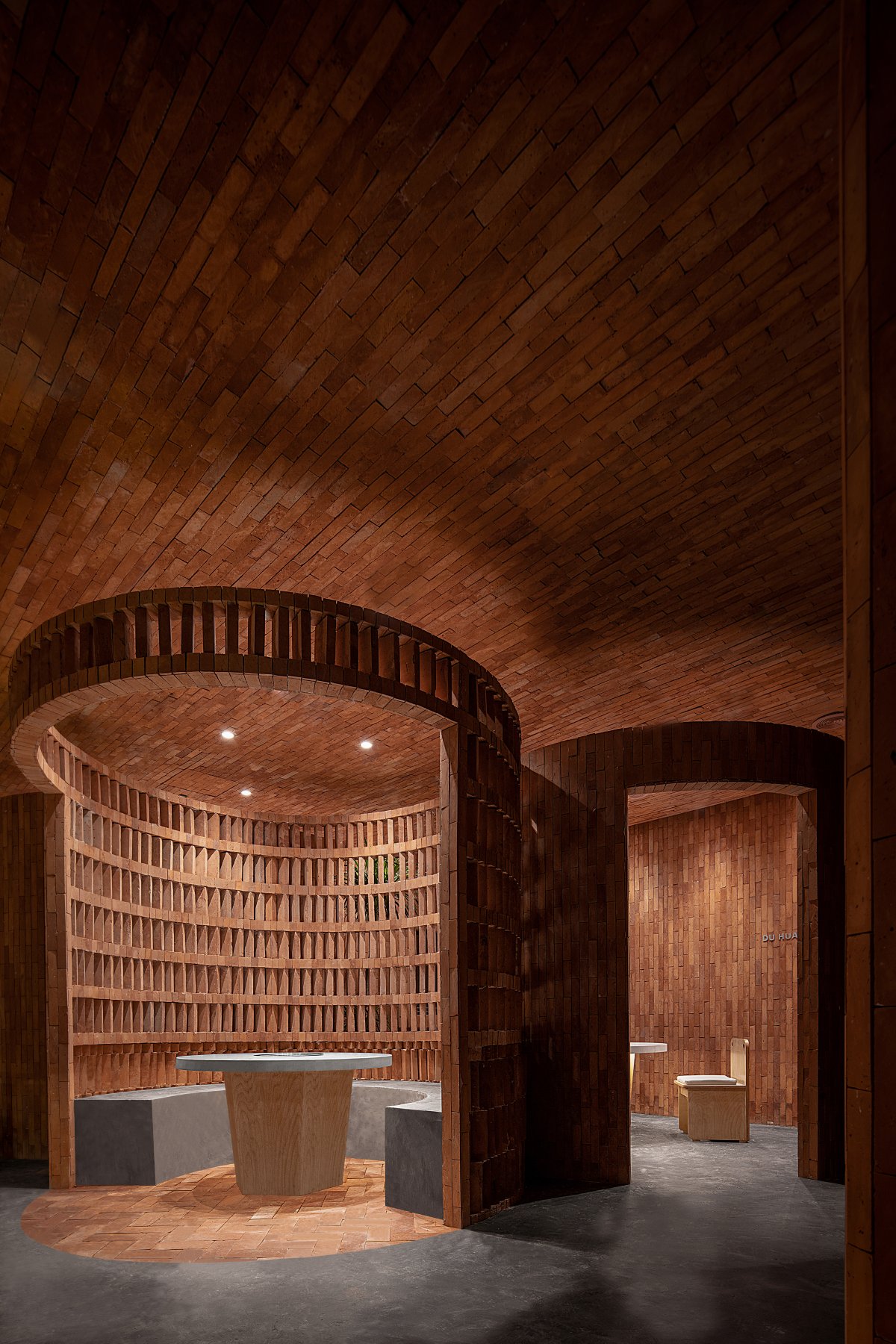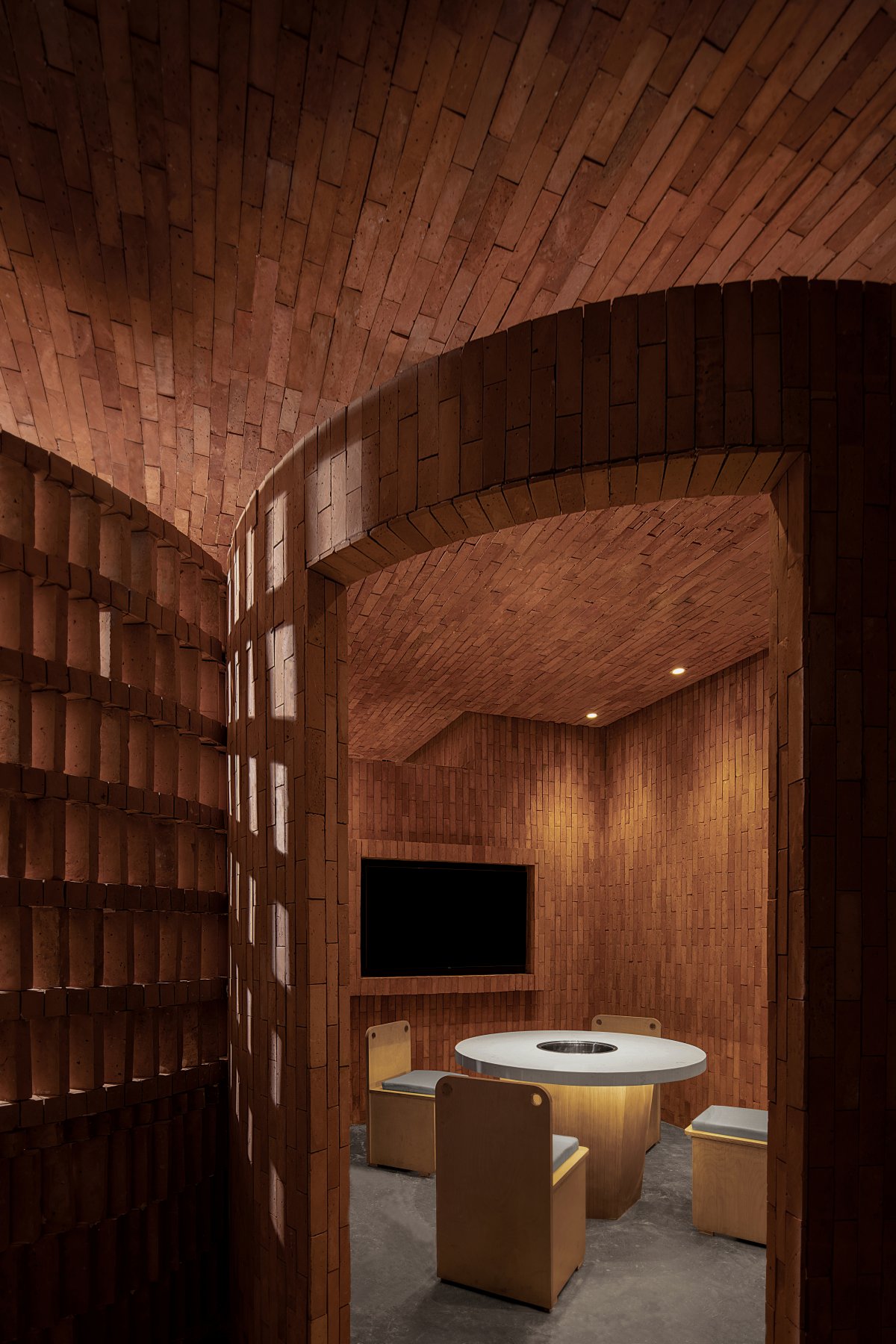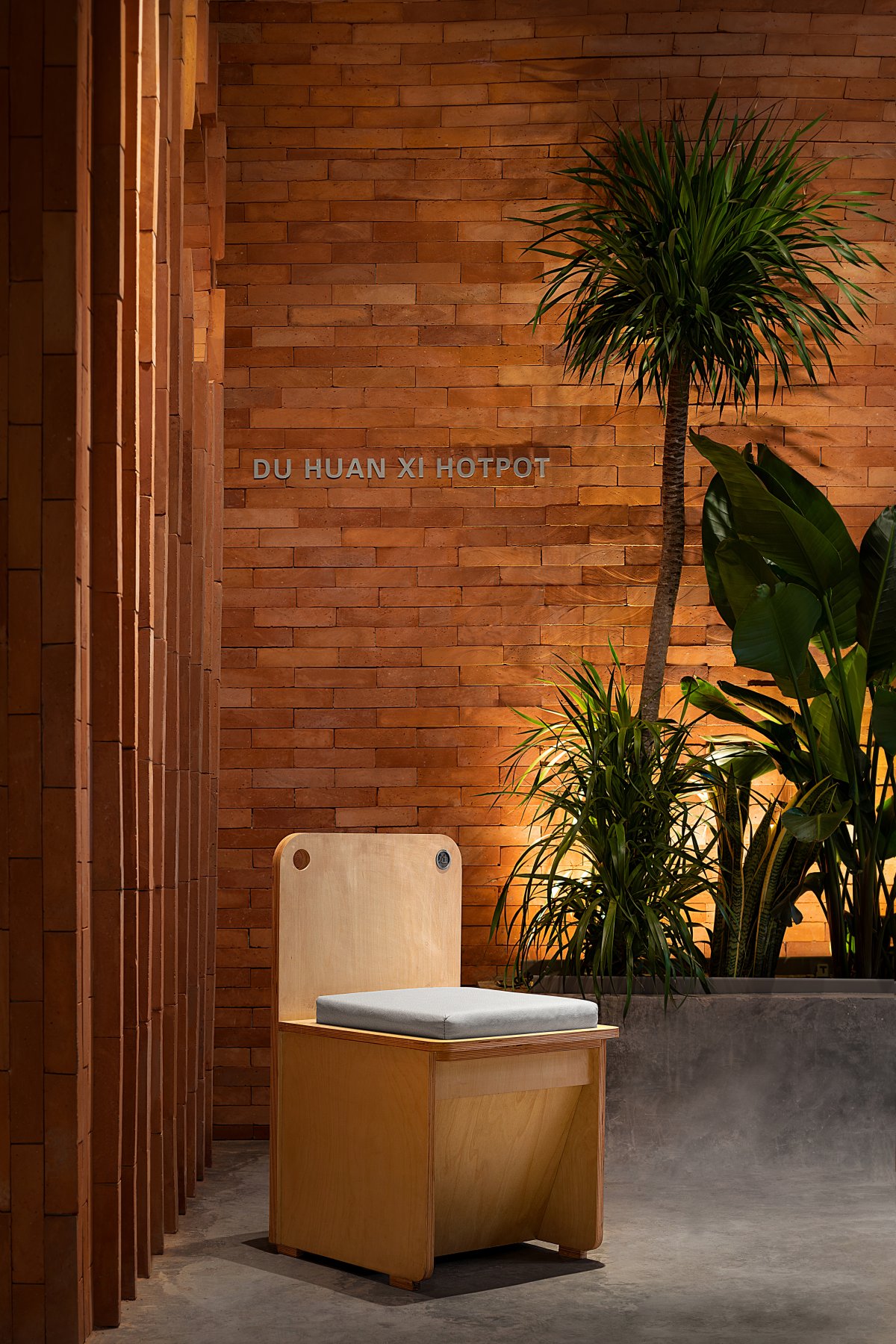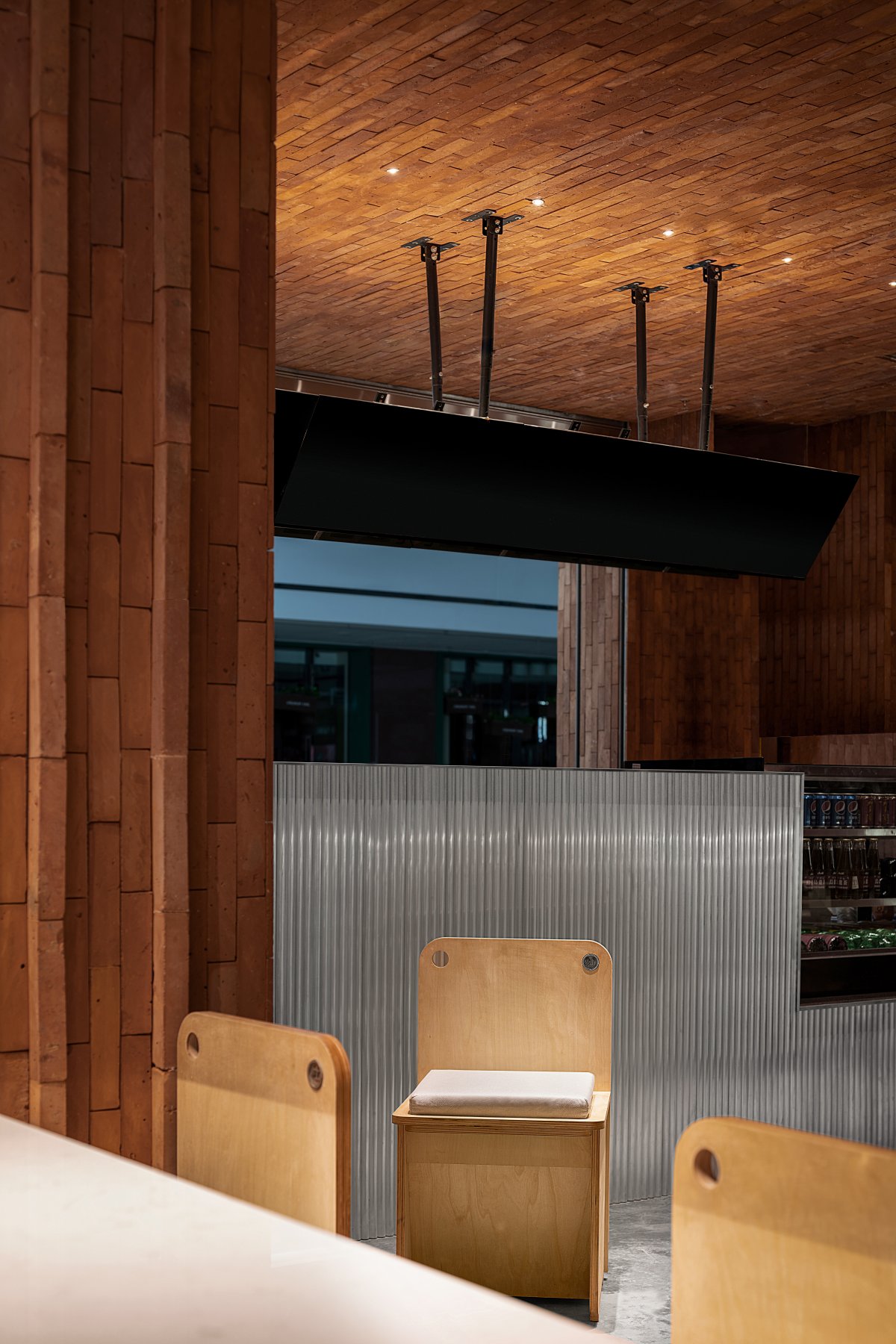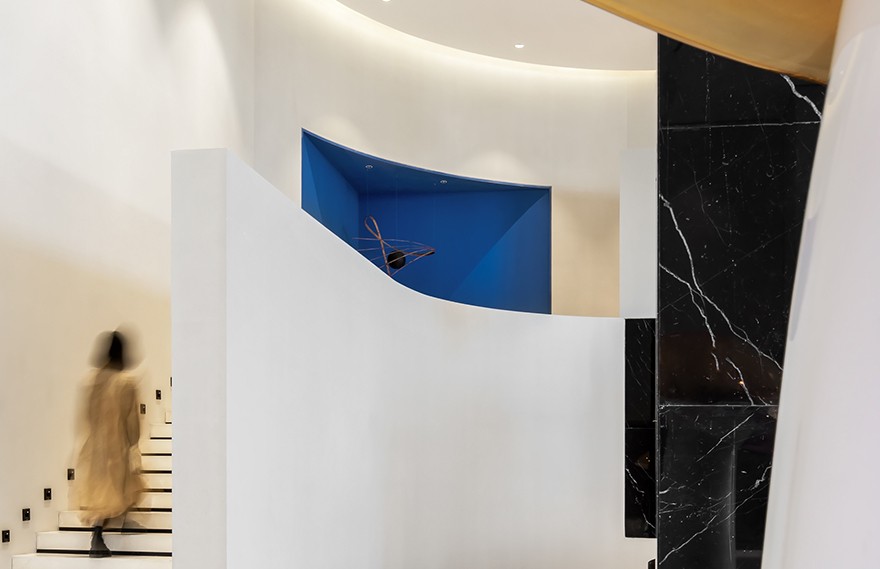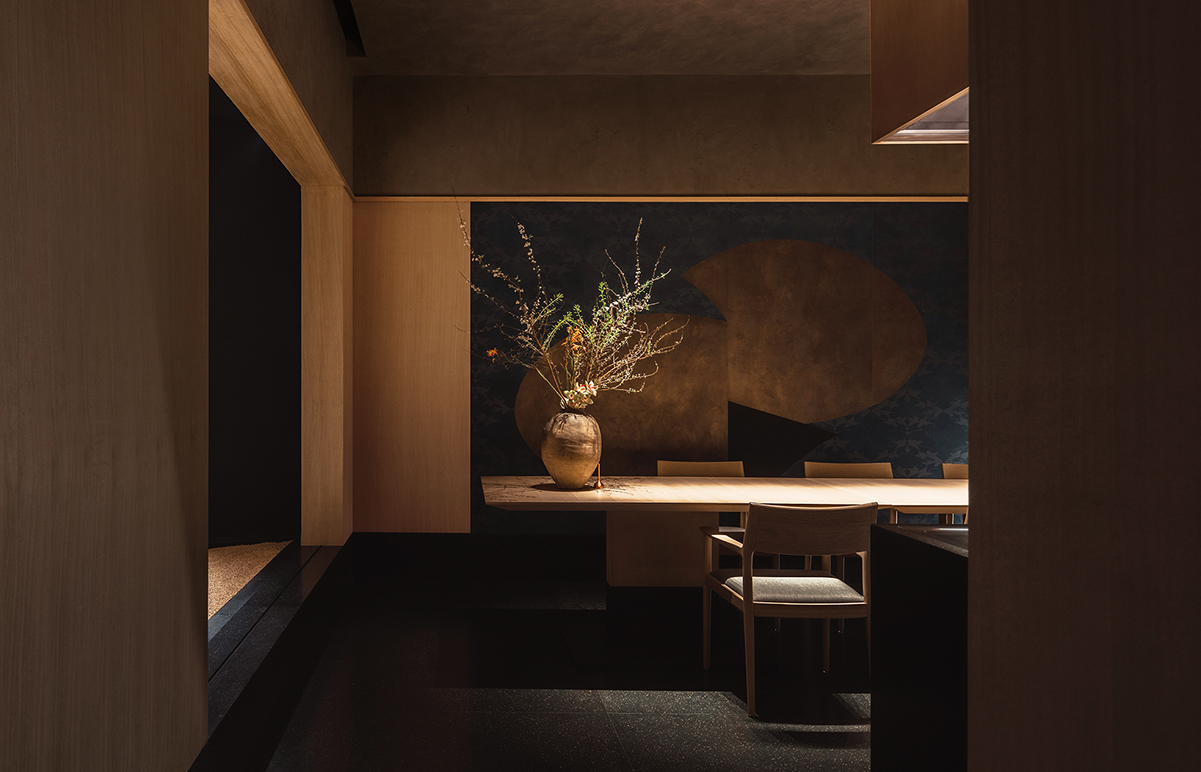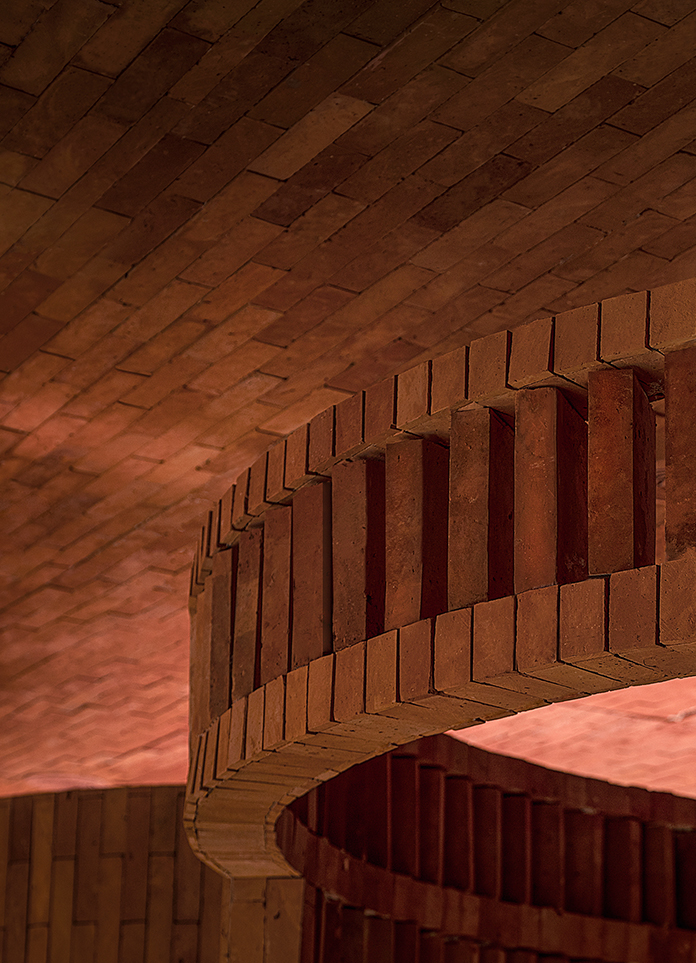
The project is located in Wanda Plaza, Shashi City, Hubei Province. The brand manager is a full hot pot enthusiast, and has joined many national famous hot pot brands. Through many years of research on hotpot in various places, I came up with the idea of creating a hotpot that belongs to Hubei people with local characteristics. Therefore, YOUNG DESIGN was invited to carry out a regional transformation of the site.
In order to create a dining space with great memories of the Shashi era, YOUNG DESIGN decided to start from the city's history: Shashi's light industry was very brilliant in the 1970s and 1990s, when there were a large number of star enterprises closely related to people's life, such as the first leading enterprise in China, the thermos factory, and the largest cotton textile factory in central China. What these enterprises left to the people of Shashi is their magnificent and orderly red brick factory buildings and dormitories. Therefore, based on the era memory carried by red bricks, YOUNG DESIGN selected red brick materials with traditional manual texture for the visual presentation of the door head, and quickly built a scene rich in era memories in the mall through the method of block interpenetration.
The package in curved form gives the space a hugging attitude, deduces a contemporary dining space through the extension of red brick walls and concrete material elements in the space, and breaks the solemn atmosphere of red bricks through green plants, giving customers a unique sense of comfort and letting the space release the vitality of the new era. Through the sequential arrangement of red brick hollowing, the light can leave mottled shadows on the other solid wall when passing through the brick wall. And with the change of light, the shape formed by these lights and shadows will change constantly, giving a different texture to the space. On the back of the compartment are the directionality created by the stacked and inclined red bricks. The appearance of these directionality gives the red bricks a sense of movement. It makes red bricks seem to be circulating in visual perception. And mobility itself is the characteristic of time and space, so visitors who eat in this space will follow these red bricks to the space-time narrative of Shashi.
Shashi can be regarded as a star city of light industry in China It was inseparable from the characteristics of the times when the Yangtze River water transport was used as a means of transport. Therefore, in the selection of materials other than red bricks, the metal closely related to the ship is used to continue to create the space-time attribute in the space. The two cabinet doors of the metal storage platform are made of waste portholes after renovation. As the material carrier of the past memories of Shashi ferry, the porthole presents a unique sense of future after being polished and renovated. The characteristics of the new era after the renovation of the old time carrier is also a projection of the current urban renewal state of Shashi. In the circular metal window on the wall, there are also changeable figures. These figures will change colors slowly as the human body breathes. This feature can emphasize the activity of space more, making this dining space seem to be connected with the ferry that fluctuates with the waves in the Yangtze River in the old time and space.
As a place where Shashi people often go for leisure after tea and dinner, the Yangtze River side naturally occupies a pivotal position in people's minds, and the Jingzhou Yangtze River Bridge, which grew up with Shashi people, is even more precious in such memories. When the diner looked up, the familiar Yangtze River Bridge seemed to appear in front of him. After refining and reconstructing the shape of the bottom of the bridge, YOUNG DESIGN created such a ceiling shape, so that the diner's sight and the sight looking up under the bridge could be combined in memory to narrate a story along the Yangtze River. From this perspective, the dining area, cabin, red brick, bridge and other elements form an organic whole, which is presented in space with the concept of concrete time, creating the desired scene for people seeking the memory of the sand market.
The space evokes resonance and association, breaks through imagination in conventional shopping malls, breaks the traditional full wall ceiling in catering space, and creates different space scenes with the help of new stainless steel device structure. In the part where customers sit, they choose more friendly wood colors as seats to present, which soften the original hard concrete. Finally, by leaving the mild wooden seats, this time conversation ushered in the end. Diners left the seats to move towards life, and the sand market gradually moved from the past to the future.
- Interiors: YOUNG Design
- Photos: Ashen
- Words: Chawei Culture Media Ni Boyu

